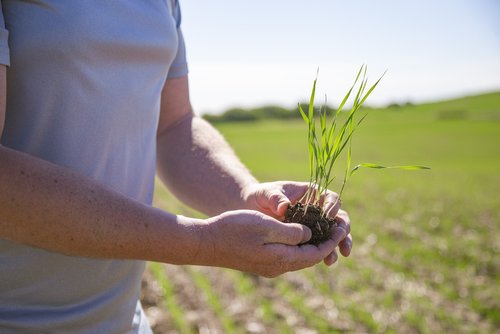Development of Field-Ready Cultivars of Canada Western Soft White Spring Wheat

Written by: Ian Doig
Since he joined the Agriculture and Agri-Food Canada Research and Development Centre in 2007, Harpinder Randhawa has participated in the development of nine wheat varieties and one triticale variety for use in Western Canada.
While its production levels are low in Western Canada, Randhawa’s considerable wheat breeding efforts include Canada Western Soft White Spring (CWSWS). Farmers who grow it typically praise its robust agronomic package and high yield. It is a wheat class with great potential.
Many may not realize CWSWS is not a new class. It has been successfully and lucratively grown on the Prairies since the 1950s, especially in southern Alberta said Randhawa. “Farmers make a good economic margin with it. It may fetch a lower price per tonne as compared to CWRS or CPS wheat, but this is compensated for by its higher yield. These varieties generally tend to yield 10 to 15 per cent higher than CPS and CWRS varieties.”
Lower in protein than CWRS varieties, CWSWS is used in the production of baked goods such as biscuits, cookies and crackers, but primarily grown under irrigation for ethanol production in central and southern Saskatchewan and southern Alberta. Its high-starch and high yield make it a particularly desirable feedstock. These qualities also make it an excellent livestock feed. “It’s very, very good for making silage,” added Randhawa. CWSWS is also a good rotational pairing under irrigation with high-value crops that include canola, beans, potatoes and sugar beets.
Funded in part by the most recent five-year Canadian National Wheat Cluster, the Development Centre’s CWSWS variety development program focuses on continued incremental improvement of quality, disease and yield characteristics.
For CWSWS varieties, the most pressing goal is to improve disease resistance. Existing cultivars produced by the program are moderately susceptible to Fusarium head blight (FHB). Randhawa and his team work to improve FHB resistance as the disease can have a heavy impact on yield. They also concurrently work to boost leaf and stem rust resistance because new and evolved pathogen races inevitably invade the Prairies.
Known as pyramiding, multiple genes that confer resistance to these diseases are incorporated within the genetics of these varieties. “In gene pyramiding, we stack multiple genes to arm the plant against pathogens,” said Randhawa. “For example, if we deploy one rust resistance gene, down the road it may break down very quickly as the pathogen evolves and mutates and defeats that gene. With multiple resistance genes for the same disease, the pathogen has lower chances to overcome and defeat the plant’s defences.”
“Similar to CPS, CWSWS constantly faces new threats to production,” said Randhawa. “It’s coming through biotic stresses such as new pathogens or new insects. At the same time, we look into abiotic stresses such as heat and drought. We’re constantly screening new germplasm and trying to find traits that have a good level of both biotic and abiotic stress resistance and applying those into new cultivars.”
While this constant improvement is welcomed by established growers of CWSWS, it also makes a strong case for broader adoption of this already appealing wheat class.